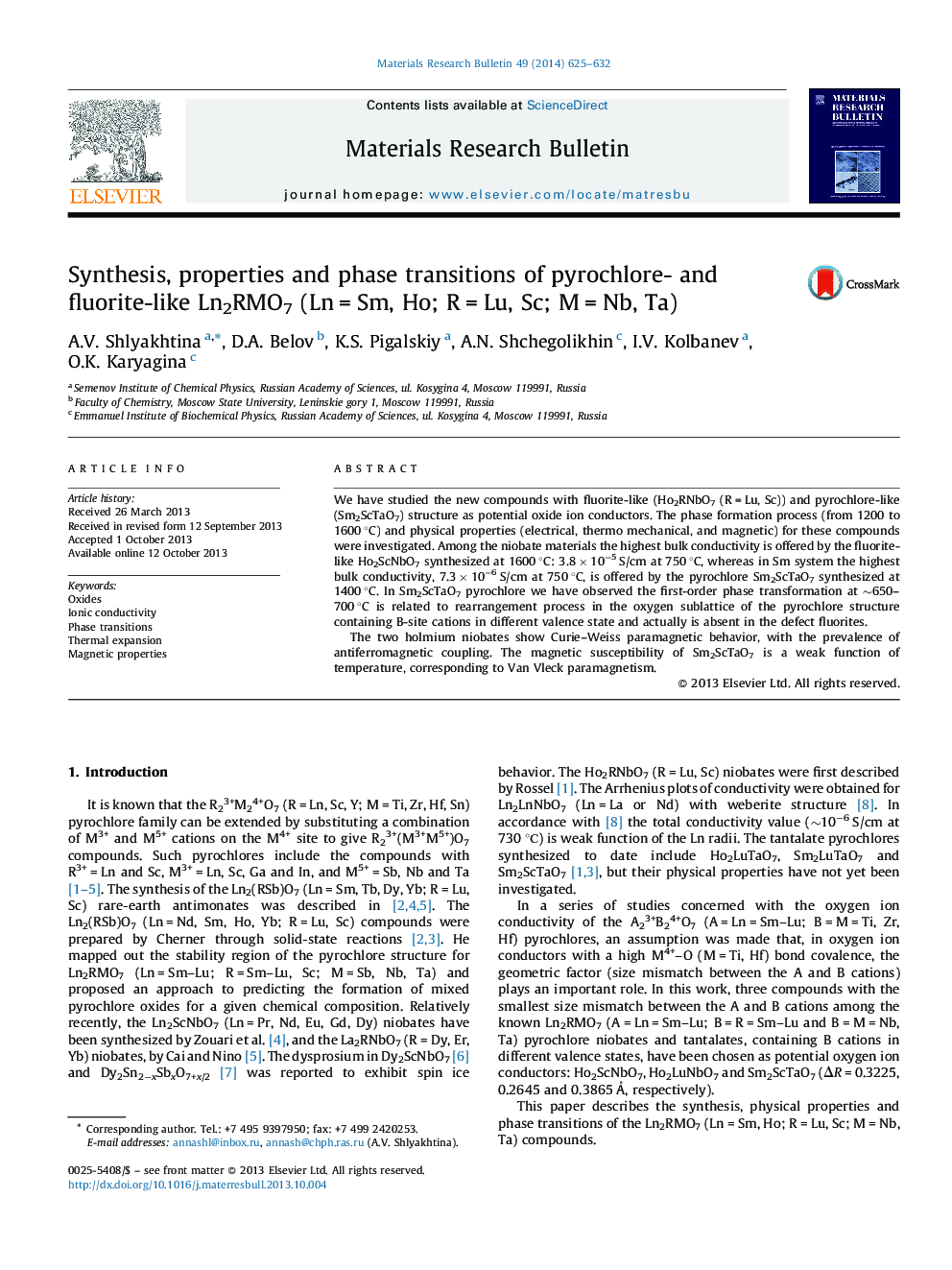| Article ID | Journal | Published Year | Pages | File Type |
|---|---|---|---|---|
| 1488662 | Materials Research Bulletin | 2014 | 8 Pages |
•The phase formation of Ln2RMO7 (Ln = Sm, Ho; R = Lu, Sc; M = Nb, Ta) at 1200–1600 °C.•The bulk conductivity and magnetic susceptibility were measured.•The bulk conductivity of Sm2ScTaO7 has oxygen ion type at T ≥ 750 °C.•The first-order structural phase transition was observed in Sm2ScTaO7 at ∼650–700 °C.•This phase transformation is not typical for defect fluorites.
We have studied the new compounds with fluorite-like (Ho2RNbO7 (R = Lu, Sc)) and pyrochlore-like (Sm2ScTaO7) structure as potential oxide ion conductors. The phase formation process (from 1200 to 1600 °C) and physical properties (electrical, thermo mechanical, and magnetic) for these compounds were investigated. Among the niobate materials the highest bulk conductivity is offered by the fluorite-like Ho2ScNbO7 synthesized at 1600 °C: 3.8 × 10−5 S/cm at 750 °C, whereas in Sm system the highest bulk conductivity, 7.3 × 10−6 S/cm at 750 °C, is offered by the pyrochlore Sm2ScTaO7 synthesized at 1400 °C. In Sm2ScTaO7 pyrochlore we have observed the first-order phase transformation at ∼650–700 °C is related to rearrangement process in the oxygen sublattice of the pyrochlore structure containing B-site cations in different valence state and actually is absent in the defect fluorites.The two holmium niobates show Curie–Weiss paramagnetic behavior, with the prevalence of antiferromagnetic coupling. The magnetic susceptibility of Sm2ScTaO7 is a weak function of temperature, corresponding to Van Vleck paramagnetism.
Graphical abstractTemperature dependences of bulk conductivity for Sm2ScTaO7 pyrochlore prepared at (1) 1400 °C, 20 h; and (2) 1200 °C, 40 h.Figure optionsDownload full-size imageDownload as PowerPoint slide
